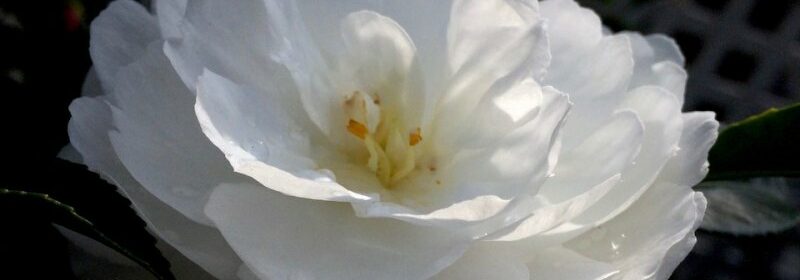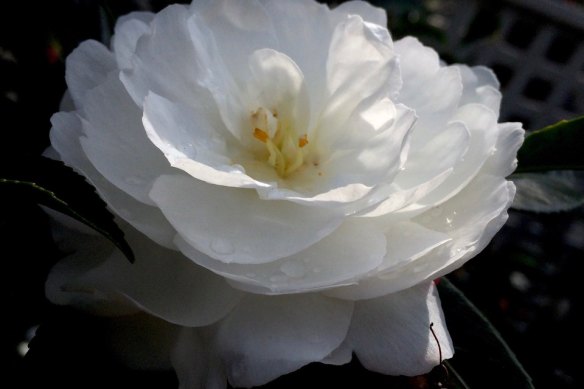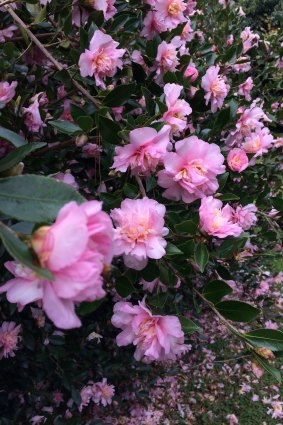The colder weather means it’s a perfect time for these flowers

The sasanquas are budding; time to remember which cupboard you put the blankets in last year. While the bigger-flowered Camellia japonica blooms as winter shivers its way toward spring, the sasanquas are the heralds of cold weather coming.
The plant is native to the southern parts of Japan where it is called ‘sazanka’, a mangling of which gives us sasanqua. Sasanquas were not widely grown in gardens in Japan until the Edo period in the 18th and 19th centuries, when new colours and varieties were developed, along with a bunch of poetic associations and meanings. Sasanqua blooms are incredibly delicate and shatter at the merest touch so in art and poetry they symbolise fragility.
Sasanqua flowersCredit:Robin Powell
The shattered blooms of sasanquas drop petal by petal into a pool of vivid colour at the base of the tree and this skirt of fallen petals is one of the plant’s distinguishing features. And it’s the reason they infuriate those who like their gardens pristine. For the rest of us, sasanquas offer many charms and a very pleasing flexibility.
Unlike their bigger cousins, the japonicas, which are picky about light conditions, sasanquas are happy in both sun and shade. They also tolerate heavy soils, though prefer those that are neutral to slightly acidic rather than alkaline.
Sasanquas can be grown as a small tree, with the lower and crossing branches removed to lift the canopy and show off a skeleton of twisting branches topped by clouds of glossy foliage. Or they can be planted close together and clipped into a hedge, with different varieties offering height options from one to five metres. They also suit being espaliered along a fence, and will grow happily in a pot.
Sasanqua flowersCredit:Robin Powell
Ross Campbell, a third-generation camellia grower from Camellia Grove Nursery in Glenorie, adds that standard sasanquas have become more popular over recent years. “We grow pink-edged white ‘Pure Silk’ and soft pink ‘Jennifer Susan’ in that lollipop form,” he says, “and we also graft ground cover sasanquas to create sweeping standards which are really something, with beautiful cascading foliage and flowers.” Camellia Grove uses pink ‘Marge Miller’ and white ‘Snow’ for its weeping standards.
There are now hundreds of named cultivars of sasanquas, in colours that range from white through variously hued pinks to red. If you have a particular tone in mind it’s best to buy them while they are in flower, and in person, so you can see the colour in real life. Camellia Grove keeps a display of blooms throughout the season for easy identification of favourites.
Sasanquas are easy-care once established. Plant them so that the top of the root ball is no deeper than the soil surface: camellias are shallow-rooted plants and burying them too deep is a cause of sudden death. Water for the first few months to help the roots establish and then whenever the soil or potting mix is dry.
Make the most of your health, relationships, fitness and nutrition with our Live Well newsletter. Get it in your inbox every Monday.
Most Viewed in Lifestyle
Source: Read Full Article

